Built on a hill between 500 and 600 metres above sea level, Cortona preserves a unique medieval centre rich in alleys, cobbled streets, ancient palaces and churches, with beautiful panoramas over the surrounding area. It has kept its medieval walls, including Etruscan and Roman portions.
The heart of the city is the Piazza della Repubblica square, with its historic palaces. Below we present the most remarkable places, classified by subjective preference, including the Etruscan Museum and the Diocesan Museum, the cathedral, churches, and sites in the surroundings such as the Archaeological Park or the Franciscan Hermitage of Le Celle.
Read also the overview of
Cortona
If you see this after your page is loaded completely, leafletJS files are missing.
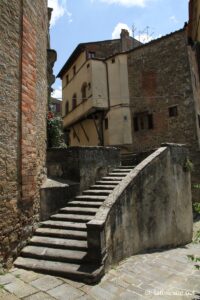
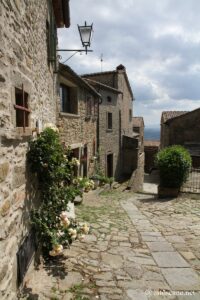
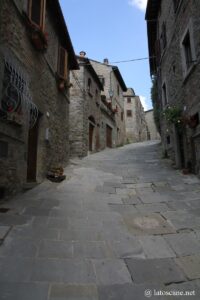
Piazza della Repubblica in Cortona
From the Porta Santa Maria, via Roma goes up to this central square, passing under the arch that crosses the City Hall, at the intersection of the main Roman axes of the decumano and cardo. This Piazza della Repubblica is the heart of the city, on the site of the ancient Roman Forum, surrounded by medieval buildings and elegant palaces, including the 12th-century Palazzo Comunale (the Town Hall) and the Palace of the Captain of the People (Palazzo del Capitano in Italian, also called Palazzo Passerini). Bars and restaurants with terraces allow to relax here.
In the middle of the Town Hall stands the tower with its clock added to the 16th century, when the palace was enlarged. Its beautiful Council Hall dates from the 16th century, preceded by an imposing staircase.
The Palace of the Captain of the People, dating back to the 13th century and dominating the square, was the residence of Cardinal Passerini in the 16th century, who ruled on behalf of the Medici family of Florence. It is now private.
On the adjacent Piazza Signorelli, across from the Palace of the Captain of the People, is the 16th-century Palazzo Casali and to the left of the 19th-century Teatro Signorelli in neoclassical style with its beautiful loggia.
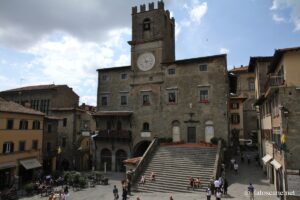
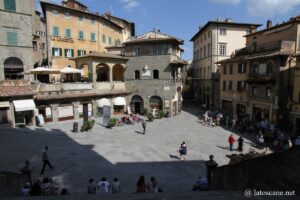
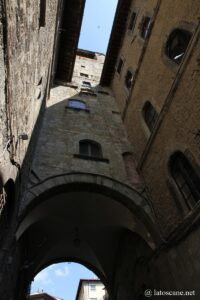
MAEC – Etruscan and City Academy Museum
The interesting MAEC museum is the main museum in Cortona, dedicated to Etruscan art, housed in the basement of a 13th-century palace renovated in the 17th century and adjoining the main square. In addition to an important section dedicated to the Etruscans, supplied in part with the material of the necropolises of Cortona, are documented the Roman period, and even a section on ancient Egypt with two mummies.
In particular, the Tabula Cortonensis is a bronze plaque from the 2nd century BC that records the sale of agricultural land. Etruscan artifacts include statues, funerary objects, bronze objects, vases, including a remarkable bronze chandelier from the 5th BC.
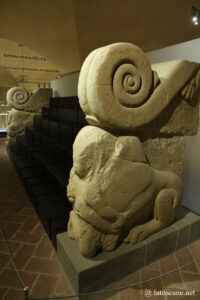
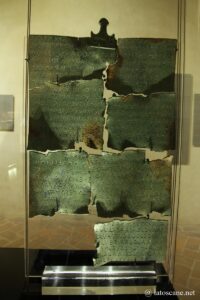
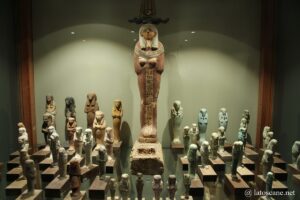
Convent of Saint Francis of Cortona
Walking up the streets of the village, the Convent of Saint Francis (Convento di San Francesco in Italian) is a peacefully place with beautiful paintings and ancient frescoes. Its church is one of the most interesting in the city, dating back to the 13th century, in Italian Gothic style, preserving the painting of the Annunciation by Pietro da Cortona from the 17th century, a relic of the Holy Cross, as well as the relics of Saint Francis of Assisi in the convent, including a bure and a pillow.
Cathedral of Cortona
The Cathedral of Cortona, Concatedral Santa Maria Assunta, built on the remains of an ancient temple, is in Romanesque style and dates back to the eleventh century, completed only in the fifteenth. On the side of the sober Romanesque facade, a loggia was built in the 16th century.
The interior is marked by the Renaissance, with a nave framed by splendid columns with capitals, beautiful works, including the funerary monument of Giovanni-Battista Tommasi, last Grand Master of the Order of Malta, the Adoration of the Shepherds by Pietro da Cortona, or the Descent of the Holy Spirit by Tommaso Bernabei.
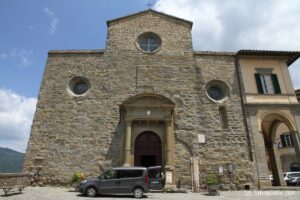
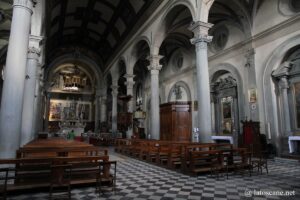
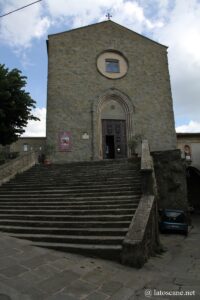
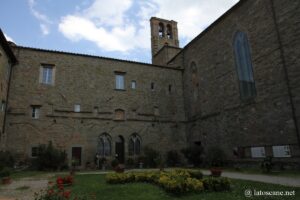
Sanctuary of Santa Margherita in Cortona
On the heights of Cortona and just below the fortress, the church of this sanctuary is the largest in the city, dedicated to Saint Margaret, patron Franciscan of the city. After his death in 1297, a first church was built in his honor near an old church dedicated to Saint Basil. Little remains of this period, beyond the 14th century fresco elements that are preserved in the Diocesan Museum.
The current structure dates from the 19th century reconstruction. It has an impressive façade with its large rose window from the 14th century building and three portals. It preserves in its vast interior with blue ceilings and bright red and yellow colors, the marble funerary monument of Saint Margaret, statues of saints, etc.
Girifalco Fortress
At the highest point of Cortona, 650 metres above the Santa Margherita sanctuary, the origin of the Girifalco Fortress is very old. There was already a sacred and defensive area under the Etruscans in the 6th century BC, and under the Romans.
Stories from the 13th century tell of a beautiful castle. It was rebuilt in the 16th century under the Medici, connecting this fortress to the walls protecting the city. This Renaissance building has a trapezoid base adapted to the shape of the ground. Owned by the city since the 18th century, it served as a prison and now hosts events and demonstrations, including the international photography festival in summer.
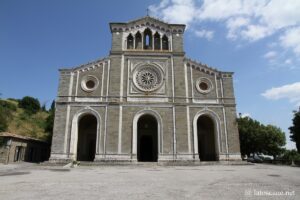
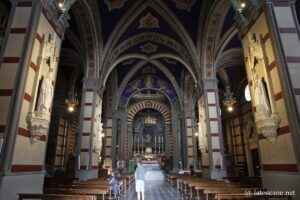
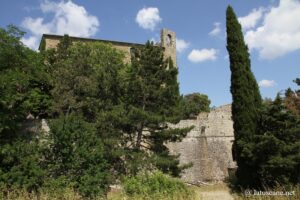
Madonna del Calcinaio
Santa Maria delle Grazie al Calcinaio is a church located outside the walls of Cortona. It was founded by the shoemakers’ guild after miraculous healings attributed to an icon of the virgin with a child that decorated a basin for tanning leather since Good Friday 1484. This one now adorns the high altar.
Designed by Francesco di Giorgio Martini, the building has the forms of the Renaissance, with perspectives, geometric lines of the interior and the dome.
Diocesan Museum of Cortona
In the cathedral square, the old church of Gesù houses the diocesan museum which collects objects, furniture, goldsmiths and works of art from the churches of the diocese.
It has a beautiful gallery with important works by masters such as Pietro Lorenzetti, Beato Angelico with his Annunciation, Bartolomeo della Gatta, Luca Signorelli or Sassetta.
The itinerary begins with a very beautiful Roman sarcophagus, carved from a representation of the fight between Dionysos and the Amazons, from the 2nd century AD found near here.
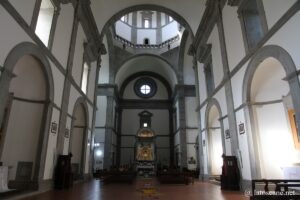
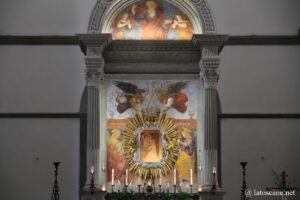
Piazza Luca Signorelli
Adjacent to the Piazza della Repubblica, on the Piazza Luca Signorelli is also the homonymous theatre, the Teatro Signorelli. It is neoclassical style with its arcades, built in the mid-nineteenth century.
It is the rear of the Palace of the Captain of the People and historic palaces, including the entrance to the MAEC museum.
Franciscan Hermitage Le Celle
The hermitage Le Celle is one of the oldest sanctuaries founded by Francis of Assisi, located more than 3 km from the city. It is a site of great tranquility, ideal for gathering, where the water runs at the foot of these rocks through a crack in the mountain, the parts of the sanctuary being dug into the rock.
Francis preached in Cortona in 1211 by withdrawing to this place offered by a nobleman of the city, Guido Vagnottelli, later companion of Francis. It is here that he would have written his spiritual testament.
Since 1537 he has been welcoming the Capuchin Brothers who restored the then abandoned site.
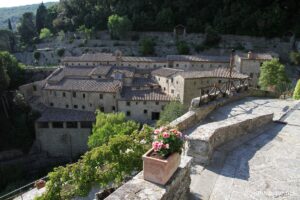
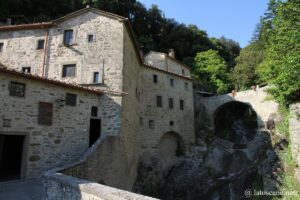
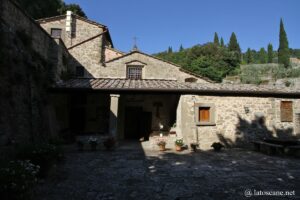
Archaeological Park of Sodo
This small archaeological park at the foot of the city of Cortona allows to observe two Etruscan tumulus (Melone I and II), the largest of which has a diameter of 64 meters, and the oldest dates back to the seventh century BC. about.
A third tumulus, called Camucia, is a few kilometres from the first two.
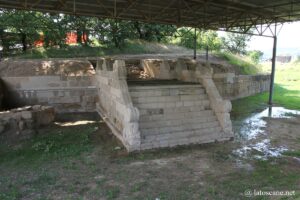
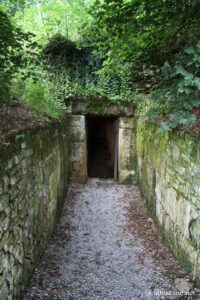
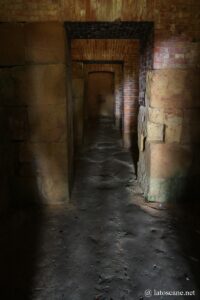
Other places in Cortona
Piazza Garibaldi
To the south-east of the city, the Piazza Garibaldi has an obelisk dedicated to Giuseppe Garibaldi in its centre, with a lookout over the Val di Chiana as far as Trasimeno Lake and Montepulciano.
Santa Maria Nuova
Just 500 metres from the walls of Cortona, Santa Maria Nuova was built in the mid-16th century by Giorgio Vasari. It is a beautiful building in Greek cross surmounted by the main dome.
Inside, four powerful pillars support the dome.
San Cristoforo Church
In the heights of Cortona, San Cristoforo is a small church with a pretty little Romanesque bell tower, dating back to the 12th century, restored in the 16th century, especially with a chapel added near the altar. Frescoes date back to the 14th century.
Pythagoras’ Tomb
On the slopes of the hill below Cortona, among olive groves is the Tanella di Pitagora (the Pythagoras’s Tomb in English), a small Hellenistic tumulus (II BC) formed by a circular base topped with a drum of juxtaposed blocks.
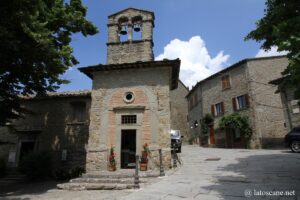
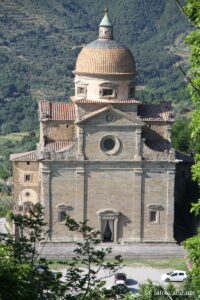

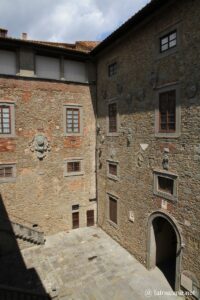
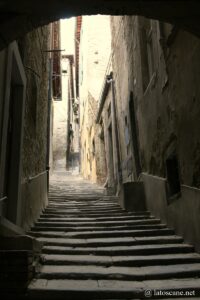
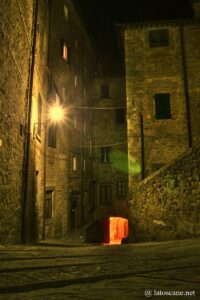
San Benedetto Church
The small San Benedetto church is an original elliptical building with a rounded brick façade. The baroque interior is full of stucco and marble.
Via Iannelli
The Via Iannelli is one of the most suggestive in Cortona thanks to its 14th century houses that retain the 16th century wooden structures. These medieval houses made of stone and brick have floors with protrusions on the street supported by wooden structures.
San Niccolò Church
On the slopes of the hills of Cortona, the church of San Niccolò is preceded by a large courtyard. This low building is preceded by a small portico in Romanesque style on the front and which extends on one side.
It was built in the first half of the 15th century. The interior was renovated in the 17th and 18th centuries with three baroque altars.
Monastery and Church of the Holy Trinity
The monastery is inhabited by cloistered Cistercian nuns. It was built in the 16th century, next to the Saint-Catherine monastery, with the oldest church Santa Trinità.
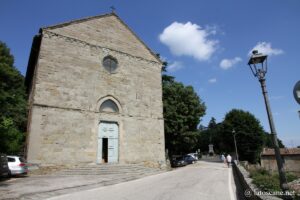
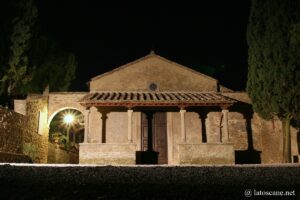
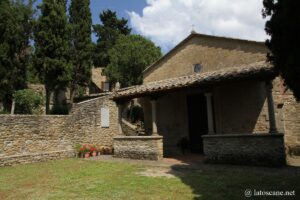
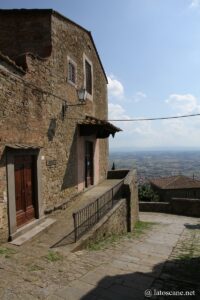

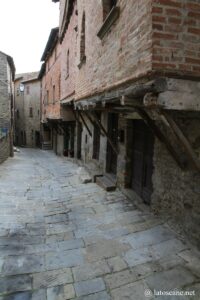
City walls
The entire old town of Cortona is surrounded by walls, almost three kilometres long. Some of it probably dates back to the Etruscans and the Romans. There were already walls in the 5th century BC, rebuilt by the Romans in the 3rd AD, restored in the 13th century and then in the 17th century.
The western side, well preserved, has recently been opened the only Etruscan door, with its two passages.
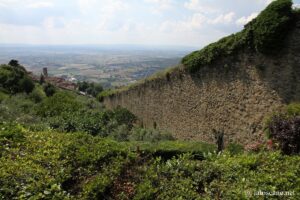
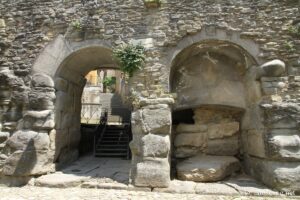
Touristic map of Cortona
If you see this after your page is loaded completely, leafletJS files are missing.
Links and sources
- General informations : en.wikipedia.org
- Touristic portals : www.cortonaweb.net, www.cortonamia.com
- Museums : cortonamaec.org, www.cortonaweb.net/musei-a-cortona
Posts about Cortona
- Cortona
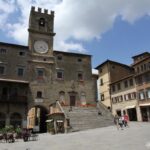 Cortona is a small and welcoming medieval town in the Val di Chiana, in the province of Arezzo, in the south-east of Tuscany and close to the Umbrian region.It is ...
Cortona is a small and welcoming medieval town in the Val di Chiana, in the province of Arezzo, in the south-east of Tuscany and close to the Umbrian region.It is ... - Hotels in Cortona
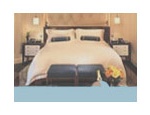 Find accommodation in Cortona, book immediately, choose from more than 75 structures including hotels, apartments, rooms and agritourism
Find accommodation in Cortona, book immediately, choose from more than 75 structures including hotels, apartments, rooms and agritourism - Interactive map of Cortona
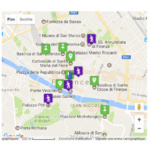 Touristic map of Cortona with main and secondary places to see, among squares, churches, palaces, museums, streets, panoramas, castles and surroundings
Touristic map of Cortona with main and secondary places to see, among squares, churches, palaces, museums, streets, panoramas, castles and surroundings - Weather forecast in Cortona
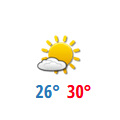 Weather forecast in Cortona for today and the next days, sunshine, temperature, rainfall and air quality
Weather forecast in Cortona for today and the next days, sunshine, temperature, rainfall and air quality

No Comments Yet